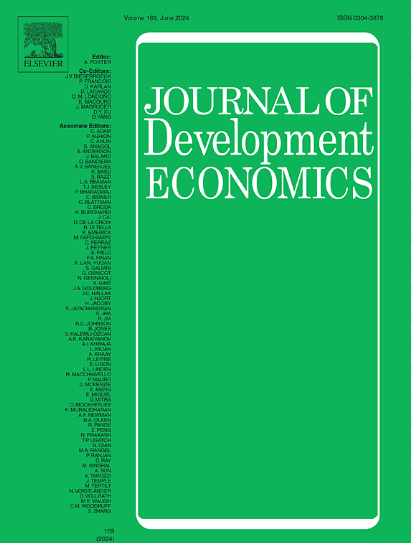空气污染与制造业生产力:了解技术和适应的作用
IF 4.6
1区 经济学
Q1 ECONOMICS
引用次数: 0
摘要
我分析了空气污染对印度制造业生产力的影响,研究了技术和适应如何影响损害。利用固定面板和卫星导出的污染数据,我估计了污染对生产力的影响,风速作为空气污染的一种工具。虽然在劳动密集型产业中发现了敏感性,但没有发现有意义的平均效应。为了解释这些模式,我提出了一个模型,表明企业通过降低产量来减轻污染损害,而行业的生产技术有助于异质性。运用该模型,笔者估计生产技术的劳动强度每增加一个标准差,污染对生产率的负面影响就会增加0.6个百分点。研究结果表明,在受到不利影响的行业中,污染对利润的损害是平均水平的两倍,而在投入保持固定的情况下,污染对利润的损害是适应时的四倍。本文章由计算机程序翻译,如有差异,请以英文原文为准。
Air pollution and manufacturing productivity: Understanding the roles of technology and adaptation
I analyze the impact of air pollution on manufacturing productivity in India, examining how technology and adaptation influence the damages. Using firm panel and satellite-derived pollution data, I estimate the effect of pollution on productivity, with wind velocity serving as an instrument for air pollution. While sensitivity is detected among labor-intensive industries, no meaningful average effect is found. To explain these patterns, I present a model showing that firms adapt by lowering output to mitigate pollution damages and that industries’ production technology contributes to heterogeneity. Applying the model, I estimate that a one standard deviation increase in the labor intensity of production technology results in a 0.6 percentage point greater negative impact of pollution on productivity. The findings imply that the damages of pollution to profits are twice as high among adversely affected industries than the average and four times higher when inputs remain fixed relative to when they adapt.
求助全文
通过发布文献求助,成功后即可免费获取论文全文。
去求助
来源期刊

Journal of Development Economics
ECONOMICS-
CiteScore
8.30
自引率
4.00%
发文量
126
审稿时长
72 days
期刊介绍:
The Journal of Development Economics publishes papers relating to all aspects of economic development - from immediate policy concerns to structural problems of underdevelopment. The emphasis is on quantitative or analytical work, which is relevant as well as intellectually stimulating.
 求助内容:
求助内容: 应助结果提醒方式:
应助结果提醒方式:


